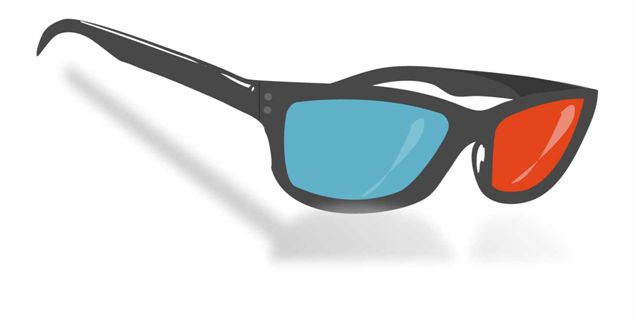MPEG Industry Forum Launches 3DTV Working Group
In another sign that major vendors see 3D technologies as a
promising new business, the recently formed MPEG Industry Forum 3DTV Working
Group is embarking on an ambitious effort to speed the development of standards
and business models for the transmission of 3D content to the home.
"We want to get the message out that you can actually start
delivering 3D now over the entire existing MPEG-2 and MPEG-4 infrastructure and
that there is a path to the future where you can deliver even more compelling,
higher quality 3D TV," said Sean McCarthy, chair of MPEGIF's 3DTV Working Group
and a fellow on Motorola's technical staff "We think there is a business case
for 3DTV to the home now. We want to accelerate that and see that the technology
evolves according to industry standards rather than proprietary technologies."

Founding members of the group include Motorola, Harmonic, Dicas,
NetLogic, MainConcept and TDVision, but the group's first meeting at the
Consumer Electronics Show in Las Vegas
Jan. 7 to 10 attracted a wide array of companies, including cable programmers
and telcos.
MPEGIF vice president David Price, Harmonic's vice president
of business development and marketing communications, said the group expects to
soon have 30 to 40 groups and companies from around the world involved in the effort.
A key part of its efforts will be education.
"We are right at the beginning now," said McCarthy. "There
are many competing ways to do 3D and there is a lot of confusion right now. We
want to provide some clarity on the technical side to the decision-makers and
some clarity on the business side to the technologists and standards
committees."
The group will provide backing for standards-based 3D
technologies, rather than proprietary ones. "Motorola and Harmonic are both in
the business of creating technology that supports standards-based
infrastructures," Price noted. "Right now we are getting a rush of different
proprietary or quasi-proprietary types of solutions coming into the market.
Multichannel Newsletter
The smarter way to stay on top of the multichannel video marketplace. Sign up below.
"We would hate to see BSkyB go off and do their thing in a
different way from say the guys at Discovery and the guys at ESPN," said Price.
"That would fragment the market. We want a homogeneous market, the kind of
market that is created by the adoption of standards."
The group won't develop those standards itself. Rather, it
will work closely with the Moving Picture Experts Group (MPEG), along with
other associations and standards-setting bodies.
"MPEG is in the business of creating motion picture moving
images standards, but they don't play a role in the education, promulgation and
adoption of standards," Price said. "Where they finish, we pick up."
Standards can be developed quickly, said Price.
"If the consolidation of standards happens at the same pace
as the rush of interest in 3D, I think we are no further than 12 months from
the finalization and adoption of a real standard," he said.
A lack of standards has been a key impediment blocking the
rapid rollout of 3D, according to analysts, though some important steps have
already been taken. The new HDMI 1.4 standard released last year supports 3D
and SMPTE is working on a 3D standard for masters that should be completed this
summer.
In December, the Blu-ray Disk Association released a
specification for 3D that will allow consumers to watch in-format movies on 3D-capable
Blu-ray players and TVs.
Even so, the technology will take years to develop. A recent
PricewaterhouseCoopers study predicted that by 2014, 3D capable TVs will be in
about 15% to 25% of all U.S.
homes and about 20% to 30% of all U.S.
cinemas will be able to handle 3D films.
That report also noted that some types of content, such as
regular TV fare that is interrupted with a heavy commercial ad load, might not
work well with an immersive 3D experience that requires viewers to use glasses.
Still, both McCarthy and Price stressed that 3D is likely to
move faster than high definition television, which was first tested in 1969 in Japan
and is only now reaching 50% penetration rates in the U.S.
Unlike the early days of HD, major movie studios are already producing popular
blockbuster films in 3D and multichannel operators face fewer bandwidth
constraints, McCarthy noted.
"I don't think 3D is going to be as disruptive as HD in
terms of the infrastructure," he said.
A pair of satellite providers -- the United
Kingdom's BSkyB and DirecTV in the U.S.--
plan to use their existing structure and set-tops to deliver 3D images that can
be viewed on the newer sets now coming to market.
Last week, CableLabs also announced that its tests show that
"many of the digital set-top boxes deployed by cable operators are capable of
processing 3D TV signals in frame-compatible formats."
Those formats carry separate left and right video signals
within the video frame used to convey a conventional HD signal.
Further down the road, as more bandwidth becomes available,
other systems may be able to deliver a HD image for both eyes in high
definition 1080p format.
"We can see a way to deliver 3D now, a way to deliver
it in 12 months, and a way to do it in 24 months with even better quality,"
McCarthy said.
